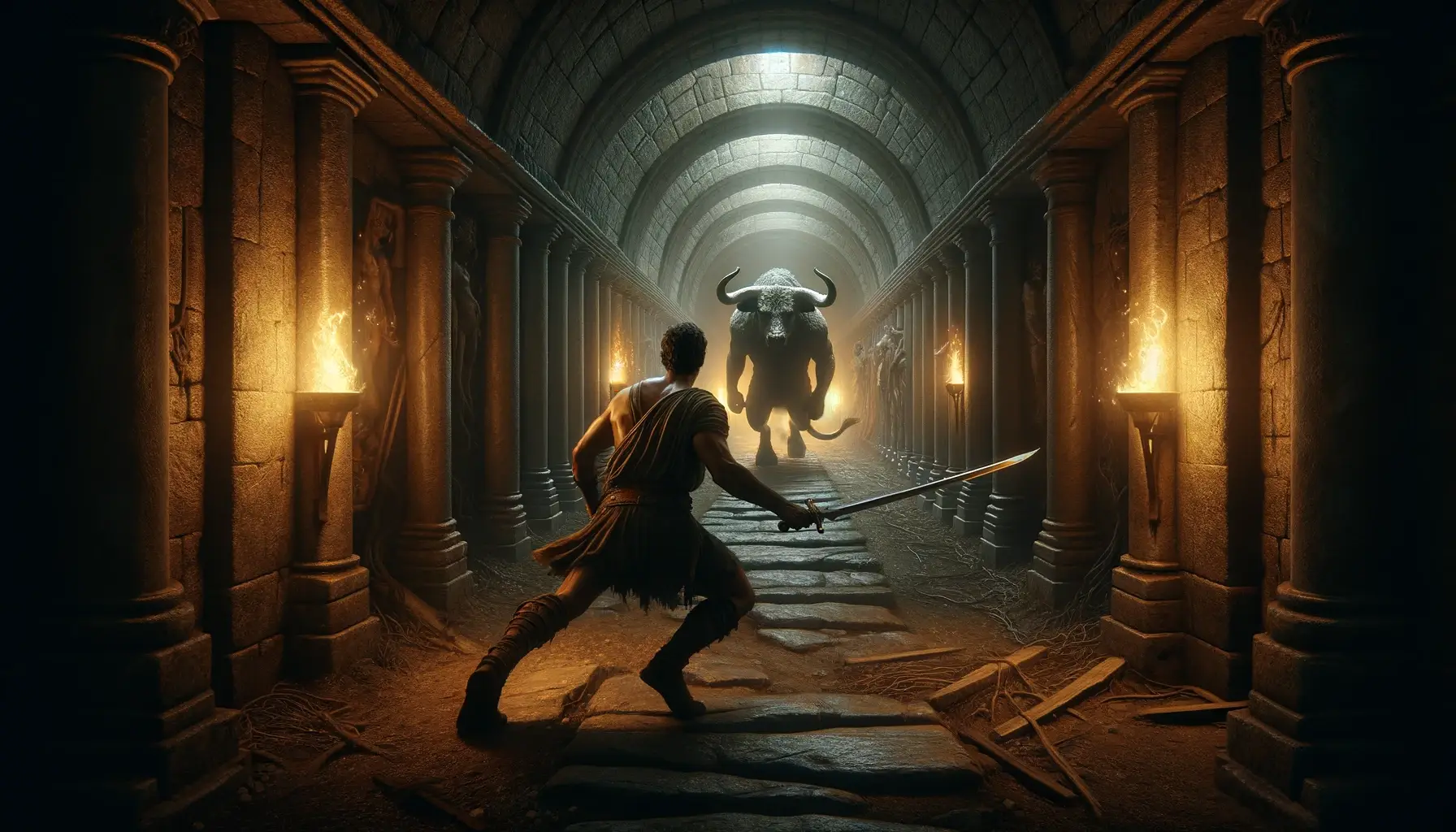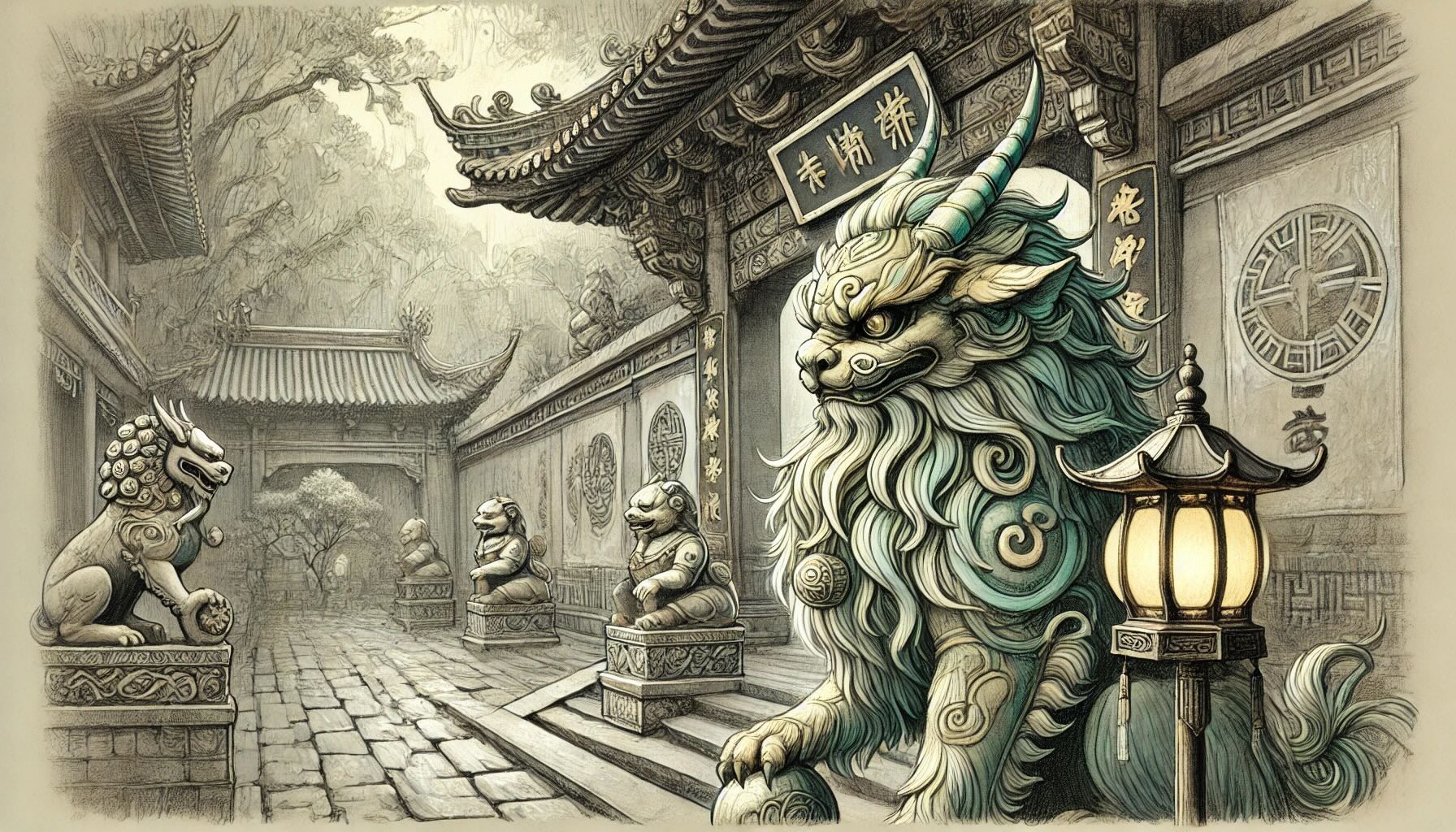A Monster in the Maze
The Minotaur, a creature with the body of a man and the head of a bull, is one of Greek mythology's most terrifying figures. Trapped in the twisting maze of the Labyrinth, the beast claimed countless lives. But how difficult was it to truly defeat the Minotaur? This tale isn’t just about brute strength—it’s about courage, cleverness, and the determination to challenge the impossible.
The Legend of the Minotaur: A Symbol of Terror
The Minotaur’s origin is a tale of divine wrath entwined with human mistakes. Poseidon, angered by King Minos’ refusal to sacrifice a sacred bull, cursed Minos’ wife, Pasiphaë, to fall in love with the animal. Their union created the Minotaur, a creature combining the intellect of a man with the ferocity of a bull.
Too dangerous to roam freely, the Minotaur was imprisoned in the Labyrinth, a sprawling maze crafted by the genius inventor Daedalus. This maze became both a prison for the creature and a death sentence for the young Athenians sacrificed to it each year. The Minotaur wasn’t just a monster but a constant reminder of the cost of arrogance and broken promises.
Theseus: The Hero Who Broke the Cycle
Among the stories tied to the Minotaur, the tale of Theseus stands out. The prince of Athens volunteered to end the bloody tradition, traveling to Crete determined to defeat the beast. His success wasn’t just about strength; it was a triumph of strategy and collaboration.
Ariadne, King Minos’ daughter, played a key role in Theseus’ achievement. She gave him a sword and a ball of thread, a simple yet brilliant tool that allowed him to retrace his steps through the maze. With courage and ingenuity, Theseus slayed the Minotaur and found his way back, proving that even the most terrifying foes could be defeated with the right approach.
The Unsuccessful Attempts
Before Theseus, many Athenians ventured into the Labyrinth, but none survived. Myths don’t detail their attempts, but their tragic ends highlight just how overwhelming the Minotaur’s strength and the Labyrinth’s complexity were. These sacrifices make Theseus’ success all the more extraordinary, showing how preparation and strategy can make the difference between failure and triumph.
Strengths and Weaknesses of the Minotaur
The Minotaur was a powerful adversary, blending the raw power of a bull with the cunning of a human. It thrived in the confines of the Labyrinth, where its prey had little chance of escape. Its strength and endurance made it a near-perfect predator.
Yet the Minotaur wasn’t unbeatable. Confined to the Labyrinth, it relied on instinct over strategy. A clever opponent, like Theseus, could use the maze’s design to create confusion or plan traps. Its weaknesses weren’t obvious but could be exploited with enough preparation and ingenuity.
Strategies for Conquering the Minotaur
1. Preparation and Gear
Facing the Minotaur required more than bravery. A sharp weapon like a sword or spear was essential for offense, and a sturdy shield was critical for protection. Lightweight armor allowed for agility in the maze’s tight corridors, while torches provided light in the darkness. Provisions like water and food were vital for surviving the unknown length of the quest.
2. Mental Resilience
The Labyrinth tested not only physical strength but also mental fortitude. Warriors needed to keep their focus and composure, navigating its twists and turns without succumbing to fear or confusion. A calm, clear mind was as important as any weapon.
3. Stealth and Speed
Directly confronting the Minotaur’s raw power was a dangerous gamble. A smarter approach relied on stealth and precision. By avoiding detection and striking vulnerable areas like the eyes or underbelly, a warrior could weaken the beast through hit-and-run tactics. This approach minimized the risk of prolonged combat and allowed the warrior to weaken the beast gradually.
4. Using the Labyrinth to Your Advantage
The Labyrinth was as much a challenge as the Minotaur itself, but it could also be used against the beast. By understanding the maze’s layout, a skilled fighter could set traps, plan ambushes, or manipulate the Minotaur’s movements. Success came from turning the maze’s confusing design into an opportunity rather than a disadvantage.
5. Team Tactics
While Theseus faced the Minotaur alone, a group approach might have been even more effective. Diversionary tactics, such as one person drawing the Minotaur’s attention while others attacked from its blind spots, could exploit the creature’s divided focus. Collaboration allowed for a more dynamic and coordinated effort.
6. The Role of Fate and the Gods
In Greek mythology, success often depended on more than mortal effort. Theseus’ triumph may have been aided by the gods, through Ariadne’s intervention or divine favor. While not a strategy in itself, the influence of fate and the gods adds an extra layer of complexity to the myth.
Conclusion: The Legacy of the Minotaur
The Minotaur’s defeat was not a matter of brute strength alone but of strategy, preparation, and courage. Theseus’ use of tools, clever planning, and the Labyrinth itself turned a seemingly impossible challenge into a decisive victory. The myth reminds us that even the most fearsome creatures can be conquered with the right approach



